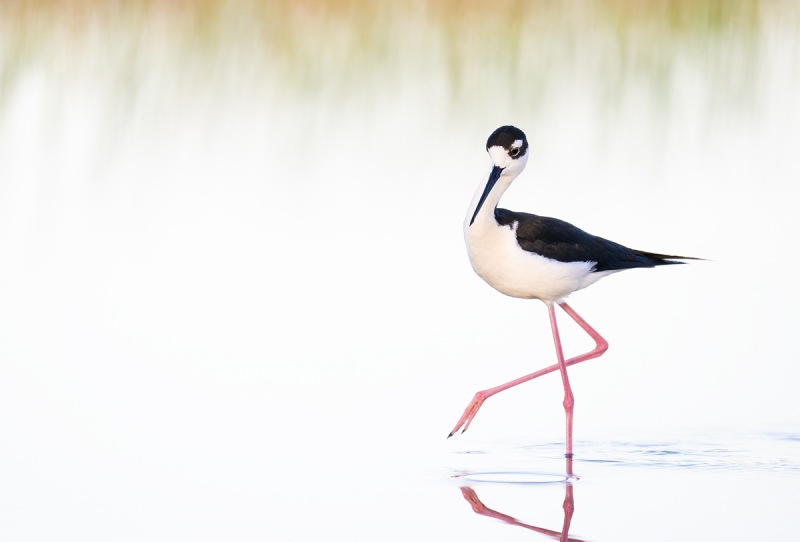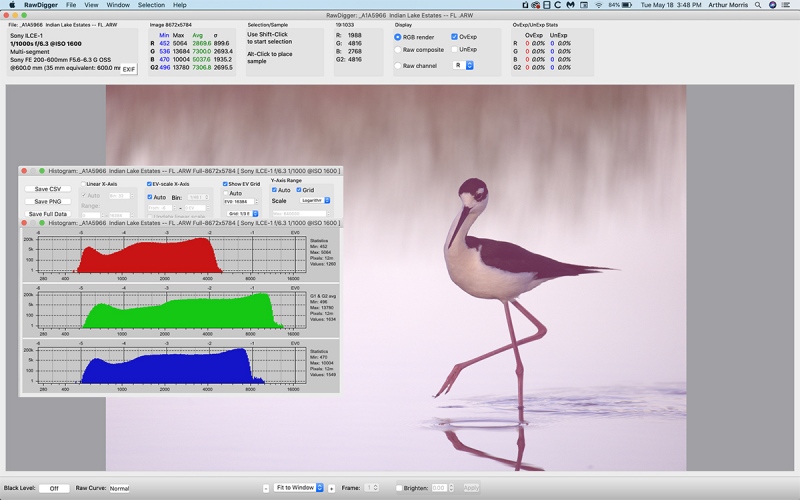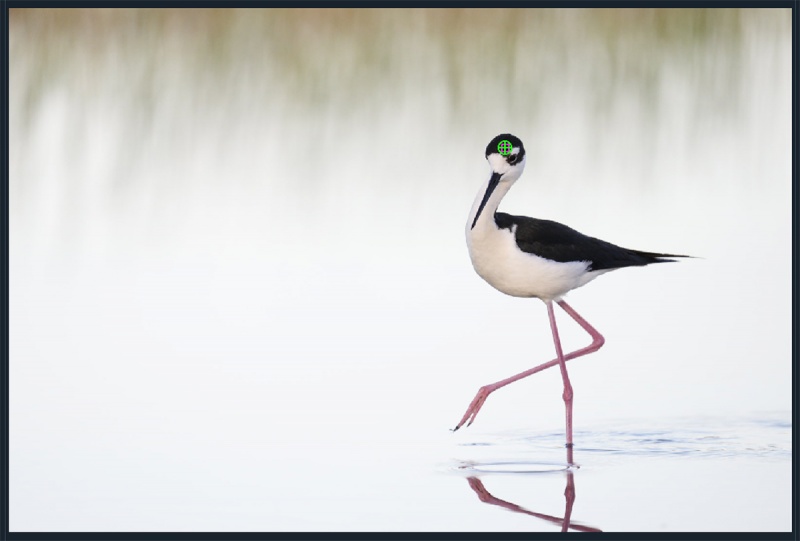What’s Up?
Clemens Van der Werf, Anita North, and I sat in the marsh on a gorgeous Tuesday morning. The courtship behaviors and the number of squabbles have gone way down but we had some good chances with several Black-necked Stilts feeding in still blue water tinged by the reflections of some grey clouds in the southwest. Clemens and Anita went off to photograph the Mother’s Day II chicks and I headed home early to finish yesterday’s blog post.
With both shoulders pain free and feeling much stronger, I’ve gotten back in the pool for the past three days.
Today is Wednesday 19 May 2021. Clemens and Anita had so much fun with the stilts and the new crane babies that Clemens’ boat will again be staying in the driveway while we head down to the marsh.The weather looks good with mostly clear skies and a northeast wind. Wherever you are, and whatever you are doing, I hope that you have a great day.
This blog post took about ninety minutes to prepare and makes 146 consecutive days with a new one. Please remember that if an item — a Delkin flash card, or a tripod head — for example, that is available from B&H and/or Bedfords and is also available in the BAA Online Store, it would be great if you opt to purchase from us. We will match any price. Please remember also to use my B&H affiliate links or to save 3% at Bedfords by using the BIRDSASART discount code at checkout. Doing either often earns you free guides and/or discounts. And doing so always earns my great appreciation.
Care For a YouTube Smile?
Click here to view Kids Meet a 101 Year Old from Hi Ho Kids.
With Zebras, Eye Tracking AF, & Topaz, Is Bird Photography Too Easy Now?
SONY Zebras allow folks to consistently get near-perfect exposures even in changing light. The latest eye/face/bird tracking AF systems truly are science-fiction like. Topaz DeNoise allows us to work at high ISOs while paying only a small penalty if the images are properly exposed. Topaz Sharpen AI does a great job with small errors of motion blur. And with or without Zebras, RawDigger enables serious photographers to learn to fine-tune their exposures.
So is bird photography too easy now?
It is surely easier but nowhere near too easy. You still need to get up early and slog around in the mud. Or walk for mile (with still relatively heavy gear). You still need to know how to evaluate and analyze sky conditions, wind direction, and the quality and direction of the lights.You still need to study the behavior of your subjects in order to maximize your chances. As good as the new AF systems are, you need to study them long and hard in order to get the most out of them. Many folks listening to the know-nothing, online gurus have their cameras set up so poorly that it is a wonder that they ever make a single sharp image, much less a sharp image of a bird in flight. That is why the various BAA Camera User’s e-Guides have been so successful. And lastly, you still need to know what makes a good image.
And as good as the AF systems are, the photographer is still the one who has to point the lens in the right direction to come up with the image design they are looking for. (And to keep the lens still.) There is and will never be an Auto Composition system …
Creativity, intelligence, determination, good sharpness techniques, camera handling skill, and some degree of strength, stamina, hand-eye coordination, good reflexes, and fine motor skills are all needed if one is to become at least a good bird photographer. And field-craft is an oft-overlooked factor; how skilled are you at getting close to free and wild birds? Yes, it is a plus to have the latest/greatest gear, but the factors mentioned above are far more important than what camera and lens you are holding. That said, the recent technological advances have enabled me and many others to make better and better images on a consistent basis, especially of birds in flight and in action.
Did I leave anything out? Do you think that bird photography is too easy now?
|
|
|
This image was created on 17 May 2021 in a marsh down by the lake at ILE. While seated on a milk Crate, I used the hand held Sony FE 200-600mm f/5.6-6.3 G OSS lens (at 600mm) and The One, the Sony Alpha 1 Mirrorless digital camera. ISO 640. Exposure determined via Zebras with ISO on the rear dial: 1/1000 sec. at f/6.3 (wide open) in Manual mode. The exposure was confirmed as perfect by RawDigger. AWB at 7:10am when a big cloud covered the sun for a bit. Wide/AF-C was active at the moment of exposure and performed just about perfectly. Click on the image to see a larger version. Image #1: Black-necked Stilt walking elegantly |
Ballerino or Danseur Noble (FR)
Just as a big cloud slid in front of the sun, this male Black-necked Stilt strode by right in front of me and my milk crate. I grabbed the 2-6 off of my work table — another milk crate — to my left, leaned to my right around the tripod mounted 600 GM, dialed up the ISO, and fired off perhaps a half dozen frames. This one, with the balletic pose, was magical. The raised foot with the bill perfectly centered on the white neck gives the bird a quite elegant look. At least from where I sit.
Ballerino is slang for a male ballet dancer, and danseur noble is the French version. The bird in Image #1 certainly qualified, if only for a brief instant in time.
|
|
Image #1A: RawDigger screen capture for the Black-necked Stilt walking elegantly image |
RawDigger Screen Capture
Though RawDigger showed the raw file brightness for this image to be just about perfect with the G channel two-thirds of the way from the 8000 line to the 16000 line, I brightened the image considerably in post: Exposure +0.65, Whites +12, and Shadows +8. Low light/high key images require some fancy stepping in Photoshop. Note that in no light/low light situations, it is simply impossible to reveal the ruby red irises of this species.
|
|
RawDigger e-Guide with Two Videos |
The RawDigger e-Guide with Two Videos
by Arthur Morris with Patrick Sparkman
The RawDigger e-Guide was created only for serious photographers who wish to get the absolute most out of their raw files.
Patrick and I began work on the guide in July 2020. At first we struggled. We asked questions. We learned about Max-G values. We puzzled as to why the Max G values for different cameras were different. IPT veteran Bart Deamer asked lots of questions that we could not answer. We got help from RawDigger creator Iliah Borg. We learned. In December, Patrick came up with an Adapted Histogram that allows us to evaluate the exposures and raw file brightness for all images created with all digital camera bodies from the last two decades. What we learned each time prompted three complete beginning to end re-writes.
The point of the guide is to teach you to truly expose to the mega-Expose-to-the-Right so that you will minimize noise, maximize image quality, best utilize your camera’s dynamic range, and attain the highest possible level of shadow detail in your RAW files in every situation. In addition, your properly exposed RAW files will contain more tonal information and feature the smoothest possible transitions between tones. And your optimized images will feature rich, accurate color.
We teach you why the GREEN channel is almost always the first to over-expose. We save you money by advising you which version of RawDigger you need. We teach you how to interpret the Max G values for your Canon, Nikon, and SONY camera bodies. It is very likely that the Shock-your-World section will shock you. And lastly — thanks to the technical and practical brilliance of Patrick Sparkman — we teach you a simple way to quickly and easily evaluate your exposures and raw file brightness using an Adapted RawDigger histogram.
The flower video takes you through a session where artie edits a folder of images in Capture One while checking the exposures and Max-G values in RawDigger. The Adapted Histogram video examines a series of recent images with the pink histograms and covers lots of fine points including and especially how to deal with specular highlights. The directions for setting up the Adapted Histogram are in the text.
If we priced this guide based on how much effort we put into it, it would sell it for $999.00. But as this guide will be purchased only by a limited number of serious photographers, we have priced it at $51.00. You can order yours here in the BAA Online Store.
|
|
Image #1B: AF Point for the Black-necked Stilt walking elegantly image |
Sony Alpha a1 AF
Barring operator error, the performance of the Sony Alpha a1 AF system at any focal length — including 1200mm as seen in recent blog posts — is, when the a1 is set up properly as detailed in the in e-mails to the Sony Alpha a1 Info & Updates group, more than remarkable. Early on, there was lots of discussion within the group with many preferring multiple back button approaches. For me a simple shutter button approach with the right AF settings that yield 99% sharp-on-the-eye images is best. By far. It is super-simple and mega-effective. In the next SONY Alpha a1 Set-up and Info Group e-mail, I will be sharing what I have learned as to when and it what situations it is best to abandon Wide. And with what. The group has already learned to limit the AF Area choices and to switch AF Areas quickly and conveniently. The default method of switching AF points with the C2 button is both slow and cumbersome.
SONY Alpha a1 Set-up and Info Group
The SONY Alpha a1 Set-up and Info Group is going great guns as folks chime in with thoughtful questions and experience-based advice. We are now up to an astounding 46 lucky folks. Early on, we discussed the myriad AF options. I gave my opinion as to the best one for flight and general bird photography. More recently, we have been in contact with folks at SONY sharing our thoughts, experiences, and frustrations with the EVF blackout problem.
All who purchased their Alpha a1 bodies via a BAA affiliate link will receive a free subscription to the Sony Alpha a1 Set-Up and Info Updates after shooting me their receipts via e-mail. (Note: it may take me several days to confirm B&H orders.) This same service may be purchased by anyone with an a1 body via a $150.00 PayPal sent to birdsasart@verizon.net indicating payment for Alpha a1 Info Updates. Alternatively, folks can call Jim weekdays at 1-863-692-0906 to pay via credit card. New members will receive composite e-mails that summarize all previous discussions.
Typos
With all blog posts, feel free to e-mail or to leave a comment regarding any typos or errors.


















I’m sorry, I meant “Stick-ma” or “Tape-ron.”
No Bird Photography is not too easy we just have the tools now to make more good solid images (when the photographer is well trained such as a student of Arthur’s…….)
It was the unusual alignment of the bill and neck that drew my attention, so I was delighted to see you liked it too. The steep, high forehead is also evident. In one of my BNSTs from a month or so ago, the bird in profile shows almost a square head–as odd compared to most birds as the overlong legs.
Beauty! Like a model walking the platform.
Love this photo Artie…serene and magical
Since my camera is still from the dark ages, that is, no zebras in the viewfinder, I do miss the +/- exposure compensation instruction you used to put in your photo details.
Thanks, Mike
Love the Stilt, magnificent. Bird photography is easier with the new cameras but I find the hardest part for most is to get out early where the birds are, find a beautiful scene with beautiful light and an active bird and start shooting. There is also a steep learning curve for the new equipment, not to mention the price. Since on this topic, I purchased your R5 guide and have found it to be extremely useful. The front focus button setup is ingenious and very easy to use. You obviously put a lot of thought and effort into this. Thanks!!!
First line: Clemens Van is missing the n.
Thanks and fixed with love.
a
Yes, bird photography is too easy now — that’s why I’m moving on to UFOs. They never seem to have a clear, sharp image of those! ; )
I love everything about your stilt image! Perfect timing and composition.
Absolutely spot-on with your analysis, and I’m not sure I could love the stilt image anymore. Elegant indeed!
Elegant!
How about knowledge of bird behavior? I know several photographers, with very good knowledge of photography concepts and great, that want to photograph a certain species at a time when it has migrated or not in season.
Agree, Renato. And that is what I said in the blog post above:
You still need to study the behavior of your subjects in order to maximize your chances.
with love, artie
Artie’s forgotten half of what he know’s, but still knows 100% of anyone else!
Elegant is it !! Green at the top and high key are great.
I’ve heard that using zebra metering when photographing African zebras causes Sony cameras to seize up causing permanent damage to the sensor. Is there a tutorial in the wings?
The tutorial is free. Here it is: when photographing Zebras (either in Africa or in the zoo) and using SONY Zebra technology the only way to succeed it to put duct tape over the front element of lens. Tip: make sure that the front element is completely covered.
with love, a
Does it have to be Sony duct tape, or will another brand work?
I’ve found Gorilla Tape to work the best but can be hard to find in the jungle of Home Depot/Lowes!
I was thinking maybe Sigma or Tamron if the Sony is too expensive.
What a lovely image to wake up to. IMO, definitely one of the best you have posted in quite a while. All of the non-camera things you mentioned this AM that are necessary of a photographer in order to make a great image I’m sure contributed. Makes me want to go out and try to find some black-necked stilts.
Typo at the end of the second line, first paragraph: “feeing”
Tanks and fixed.
with love, a